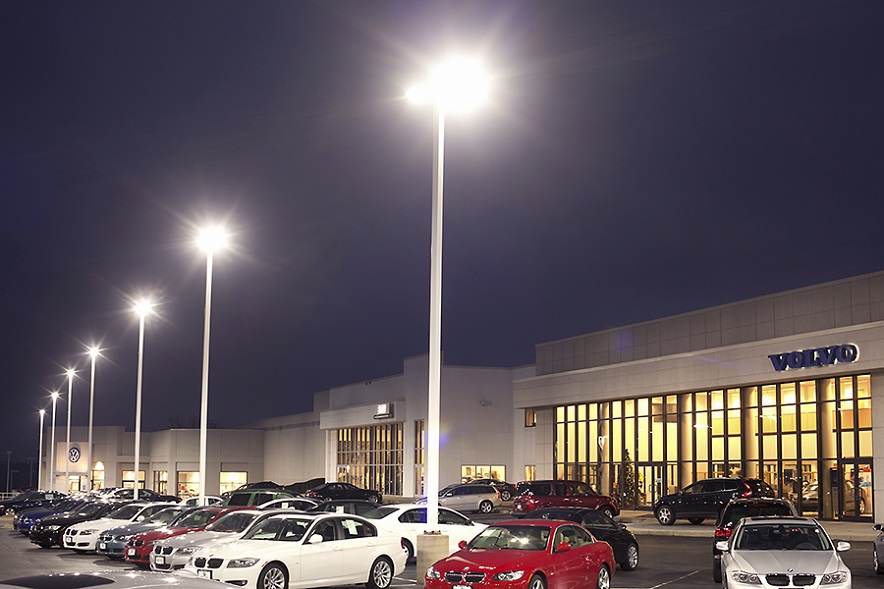Leave the LEDs On
Light. Bright, dim, or missing, in the words of Leonard Cohen, "how the light gets in" has been one of the driving factors for the development of the world as we know it. At different times in history, the light got in by campfires, candles, and lanterns as mankind built the wheel, developed the theory of gravity, and painted the Mona Lisa.
But in 1835, British inventors developed the arc lamp, followed in 1879 by Thomas Edison's invention of the light bulb. Recently, lighting technology has rapidly moved to provide better quality light to keep pace with other high-tech products, such as computers and smartphones.
Developed in the 1960s, LED technology is now poised to take on a critical role as nations and businesses alike look to keep the lights on longer, for a lower cost. And in 2012 alone, more than 49 million LEDs were installed in the United States, saving approximately $675 million in energy costs. Following is a look at the primary factors driving LED use: outdoor lighting, surveillance, and worker health.
Outdoors
LED is becoming the new standard in lighting, especially in the commercial and industrial markets in the outdoor environment where Richard Abernethy—vice president of brand management for Hubbell Outdoor Lighting—says Hubbell is seeing about a 50 percent adoption rate as people are more willing to use the bluer light that LEDs produce to help cut maintenance expenses.
Companies are also using LED lighting to light areas to a lower level, says Chris Bailey, director of Hubbell's Lighting Solutions Center. For instance, in parking lots, some end users are lighting lots to lower light levels because LEDs produce a more uniform light that is perceived to be brighter than traditional light sources lit to higher levels.
Parking lots are responding to customers who are asking for LED lights: blue-rich LED light sources that are lit to 5,000 degrees Kelvin, creating a blue-white, cool light source. When lights are lit to this level, the cool color temperature is perceived to be brighter because of the way the human eye adapts to the blue-light content.
Surveillance
The uniform brightness of LED lighting also helps when designing a surveillance system around outdoor lighting. That's because the uniformity of the light helps cameras see better. With a steady light source, the camera does not throttle back and forth to adjust to increased illumination on the ground beneath light fixtures, Bailey explains.
As LED technology and camera technology continue to improve, many businesses are looking to integrate the two to create a more responsive, efficient surveillance system, says John Hanby, senior vice president of worldwide sales for TOTUS Solutions, which creates outdoor lighting-based security platforms.
Hanby describes the trend as a convergence that's occurring between IT, lighting, and security. Companies are using this convergence to create LED lighting systems that are optimized for camera optics and analytics. This allows security to respond to incidents in real time.
For instance, TOTUS has created a system—the TOTUS Surveillance Platform—that uses geo-fences that, when tripped, trigger LED lights within the designated area to increase the brightness or flash. In turn, this alerts security staff that someone is in the area and can also trigger cameras that are connected to the system to begin recording.
Health
Companies are also looking at different ways they can begin using LEDs to improve worker productivity and health. For instance, some people may be impaired by the blue light of LEDs. Blue light can affect peoples' circadian response curve by delaying the production of melatonin in the body, possibly disrupting their sleeping habits.
To combat this, Bailey developed a technology called EXO Optics that has the ability to adapt the spectrum of light to stop the disruption to people's melatonin production. It allows outdoor lights during the commuting hours to produce light at the 5,000 Kelvin level, which creates the blue light that increases visibility and keeps drivers alert.
Bailey says he anticipates that these types of products will continue to be developed as LED technology improves and researchers look at ways to maximize the efficiency and use of the technology for different applications. "The really cool things we can do with this technology involve adapting spectral properties to enhance things like worker productivity or human health," Bailey adds.
For instance, researchers could develop a way to increase the blue light content in regions of the country during the winter months to combat seasonal affective disorder. Or, LED could be used to provide forms of light therapy for people with Alzheimer's and dementia to prevent future memory loss.
"Because we have this sort of inherent unlimited control over the light source at this point in time, the limitations are few," he explains. "We'll see the technology develop from this point further to be pointed more towards human productivity, health, and well-being, while achieving the energy efficiency goals and requirements that are already at play."
